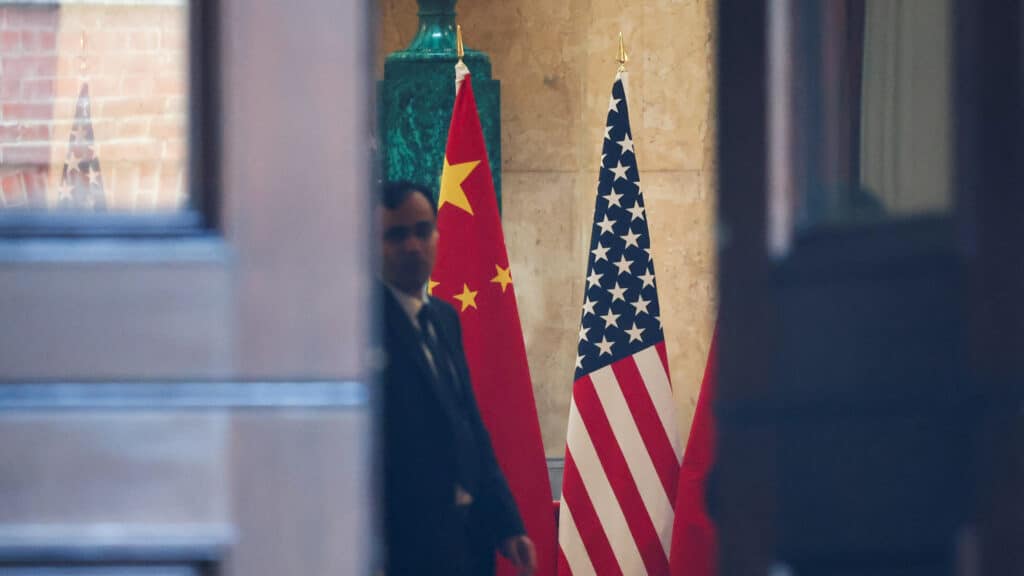US-China trade talks spotlight Kazakhstan & Ukraine as new rare earth frontiers

The recently concluded U.S.-China trade talks, which resumed on June 9 in London, focused on easing tensions over rare earth elements and advanced technology. These developments could place Kazakhstan and Ukraine at the forefront of the search for alternative sources of critical minerals.
President Donald Trump has authorized his trade team, led by Treasury Secretary Scott Bessent, to relax certain export restrictions on U.S. goods to China that were originally imposed over national security concerns. In exchange for easing or halting some of those restrictions, the U.S. wants China to release high volumes of rare earth materials, as reported by CNN.
The U.S. imports 80% of its rare earth elements (REEs) directly from China and currently lacks domestic processing capacity for heavy rare earths. According to Bloomberg, U.S. officials have expressed concern over declining shipments of rare earth magnets, vital components in electric vehicles and defense systems.
In addition to improving trade ties with China, the U.S. is actively working to diversify its REE supply chain. Ukraine and Kazakhstan stand out as promising alternative sources.
Kazakhstan’s rare earth potential
Kazakhstan produces 19 of the 34 rare earth elements considered critical to the economies of the European Union, including beryllium, tantalum, niobium and rhenium. Competition among major global players for access to these materials could significantly boost Kazakhstan’s revenue. Since 2020, the country has seen an almost fourfold increase in rare earth metal exports in real terms.
Companies from the U.S., the EU and China are eligible to bid for rights to Kazakhstan’s rare earth and rare metal deposits through government-held auctions, then-Minister of Industry and Construction Kanat Sharlapaev announced in February 2025.
In late 2024, the country reported the discovery of sites containing an estimated 2.6 million tons of rare earth metals. The findings also include 400,000 tons of tungsten and 500,000 tons of niobium. Additionally, Kazakhstan identified the Kuirektykol deposit, which holds approximately 800,000 tons of rare earth metals, including cerium and lanthanides. In total, 38 promising areas with various solid mineral deposits have been identified.
In addition to government initiatives, several private companies, including Cove Capital from the U.S. and HMS Bergbau from Germany, are actively involved in mineral exploration in Kazakhstan. Meanwhile, the Ministry of Industry is working to declassify data on rare earth deposits to attract more foreign investment into the sector.
In early April 2025, Almas Kushumov, head of the subsoil use department at the Ministry of Industry, confirmed that the government is preparing to auction off 50 solid mineral deposits, including sites rich in gold and rare metals.
Rights to the deposits will be granted for both geological exploration and commercial production. Deposits with confirmed reserves — particularly those containing gold, copper and REEs — will be offered for immediate development.
Ukraine’s rare earth potential
Ukraine is often cited as having significant potential reserves of REEs. However, the U.S. Geological Survey’s most recent Mineral Commodity Summaries does not list Ukraine as possessing any known REE reserves. The country currently has no operating rare earth mines, processing facilities or officially confirmed deposits.
In February 2025, in an interview with journalist Pavel Zarubin, Russian President Vladimir Putin said it was necessary to assess the actual extent of Ukraine’s rare earth resources. He also suggested that U.S. companies could be involved in projects to develop such deposits in Russia.
Speaking at a 2022 meeting of the U.N. Economic Commission for Europe (UNECE), before Russia’s full-scale invasion, Ukraine’s Deputy Minister of Environmental Protection and Natural Resources Svetlana Grinchuk stated that Ukraine’s rare earth deposits accounted for approximately 5% of global reserves. She described Ukraine as a «real treasure trove» of lithium. According to the Institute of Geology, Ukraine also holds REEs such as lanthanum and cerium (used in TVs and lighting); neodymium (used in wind turbines and electric vehicle batteries); and erbium and yttrium (used in applications ranging from nuclear power to lasers).
In late April 2025, the U.S. and Ukraine signed a minerals deal aimed at securing access to these critical resources. However, tapping into this potential remains a major challenge amid the ongoing war. A significant portion of Ukraine’s mineral reserves, including REEs, are located in the eastern and southern regions of the country, which are either occupied or contested by Russian forces, posing substantial security risks.

